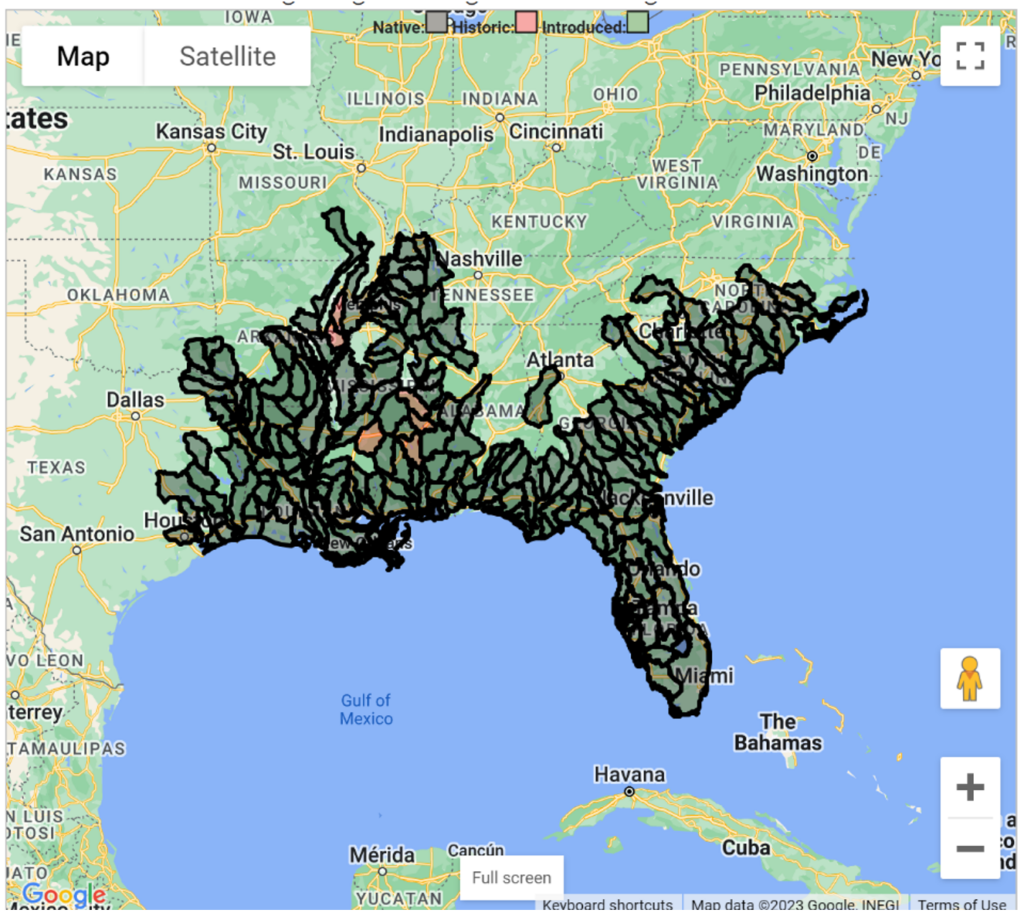Dr. Geoffrey Smith
NWFSC Biology Instructor
This month, we’ll be featuring one of the main attractions in the Florida freshwater biotope aquarium in the science building (350) on the main campus of NWFSC (Figure 1). The Dollar Sunfish is one of numerous species in the family Centrarchidae which includes popular freshwater sportfish such as various species of black basses, sunfishes, and crappies. The Centrarchidae are native only to North America, but have been widely introduced across the globe to create food and sport fisheries. Unfortunately, in many cases, these introductions have greatly disrupted natural ecosystems and resulted in large declines of native species where they’ve been introduced. The common name, sunfish, is derived from the fact that many smaller centrachids have bright red, orange, yellow, and iridescent colors. The “dollar” part of the common name is related to the relatively small size of the Dollar Sunfish compared to most other sunfishes. As adults, they are similar in size to a silver dollar coin and often have dark edges to the body making them look similar to a large coin in the water when viewed from above. This species as well as many of its close relatives are often collectively referred to as bream by anglers, which is derived from European settlers who saw a resemblance between sunfishes and a European species, the Common Bream. The genus name Lepomis is derived from Greek for scaled and gill cover, and the species name marginatus refers to the light colored margin around the “ear” (opercular) flap. The Dollar Sunfish can vary widely in coloration based on sex, time of year, and location. Generally they are tan to olive overall with blue-green iridescent spots and orange spots along the body of more mature individuals. The opercular or ear flap is dark blue to black with a white to blue iridescent margin, and there are typically wavy iridescent white to blue lines on the face (Figures 1-2). Mature, breeding males are the most colorful with bright orange to red coloration in addition to many iridescent blue-green spots and iridescent white to blue fins (Figures 1-2). This species is widely distributed throughout much of the southeaster US (Figure 3). There is some limited harvest of Dollar Sunfish by native fish enthusiasts that maintain them in aquaria. They are also harvested occasionally by anglers for food, but this generally uncommon given their small size compared to other sunfishes.

Figure 1: Adult Dollar Sunfish male (left) and female (right) in the freshwater biotope aquarium housed in the science building on the main NWFSC campus.

Figure 2: Typical coloration of an adult male (top) and female (bottom) Dollar Sunfish (Photo credit: Zachary Randall - https://www.floridamuseum.ufl.edu/discover-fish/florida-fishes-gallery/dollar-sunfish/).

Figure 3: Distribution of Dollar Sunfish within the United States (http://fishmap.org/).



